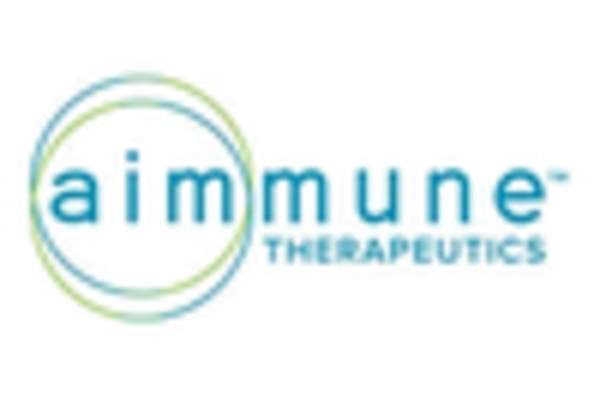Enhanced Healthcare Infrastructure
The development of healthcare infrastructure in South America significantly influences the food allergy-diagnosis-treatment market. Governments and private sectors are investing in healthcare facilities, which enhances access to allergy testing and treatment services. For instance, the establishment of specialized allergy clinics and training programs for healthcare professionals is becoming more prevalent. This improved infrastructure facilitates the implementation of advanced diagnostic technologies and treatment protocols, ultimately benefiting patients. Furthermore, as healthcare systems evolve, there is a growing emphasis on integrating allergy management into primary care. This trend is likely to increase the visibility and accessibility of allergy services, thereby driving growth in the food allergy-diagnosis-treatment market.
Increasing Prevalence of Food Allergies
The rising incidence of food allergies in South America is a critical driver for the food allergy-diagnosis-treatment market. Recent studies indicate that approximately 7% of children and 4% of adults in the region are affected by food allergies, leading to heightened awareness among healthcare providers and patients. This growing prevalence necessitates improved diagnostic methods and treatment options, thereby expanding the market. As more individuals seek medical advice for allergy-related symptoms, the demand for specialized services and products increases. Consequently, healthcare systems are compelled to adapt, fostering innovation in allergy testing and management solutions. The food allergy-diagnosis-treatment market is thus positioned for growth as it responds to the urgent need for effective diagnosis and treatment strategies.
Rising Demand for Personalized Medicine
The shift towards personalized medicine is emerging as a significant driver in the food allergy-diagnosis-treatment market. Patients increasingly seek tailored treatment plans that consider their unique genetic and environmental factors. This trend is particularly relevant in South America, where diverse populations exhibit varying responses to allergens. The food allergy-diagnosis-treatment market is adapting by developing customized diagnostic tests and therapies that cater to individual needs. As healthcare providers recognize the importance of personalized approaches, the demand for innovative solutions is expected to rise. This could lead to the introduction of new products and services that enhance patient outcomes and satisfaction.
Growing Consumer Awareness of Food Labeling
Consumer awareness regarding food labeling is becoming increasingly prominent in South America, significantly impacting the food allergy-diagnosis-treatment market. As individuals become more informed about allergens and their potential health risks, there is a heightened demand for clear and accurate food labeling. This trend encourages manufacturers to improve transparency in their products, which in turn drives the need for effective diagnostic and treatment solutions. The food allergy-diagnosis-treatment market is likely to benefit from this shift, as consumers actively seek out products that align with their dietary restrictions. Consequently, this awareness may lead to increased sales of allergy-friendly products and services.
Technological Innovations in Allergy Testing
Technological advancements in allergy testing are revolutionizing the food allergy-diagnosis-treatment market. Innovations such as rapid diagnostic tests and mobile health applications are enhancing the efficiency and accuracy of allergy detection. In South America, these technologies are becoming more accessible, allowing for quicker diagnosis and improved patient management. The food allergy-diagnosis-treatment market is witnessing a surge in demand for these innovative solutions, as they offer convenience and reliability. As technology continues to evolve, it is anticipated that new testing methods will emerge, further driving growth in the market. This trend underscores the importance of integrating technology into allergy management strategies.


















Leave a Comment